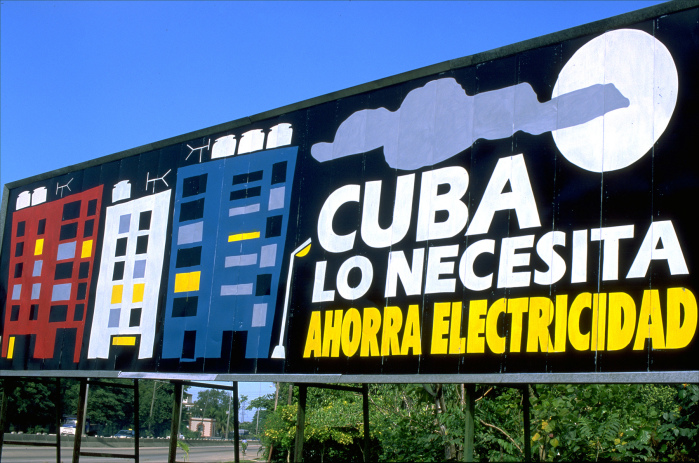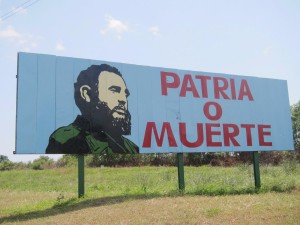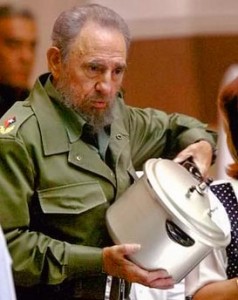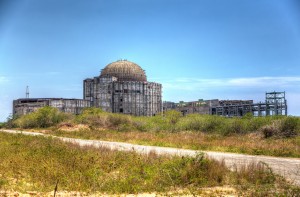
Energy – An Opportunity for US-Cuba Cooperation
In ASP’s new program, “Pathways to the Future of US-Cuba Relations,” ASP is initiating a series of articles on potential areas for cooperation between the U.S. and Cuba, building off our 2015 paper, “Potential Areas of Cooperation Between the U.S. and Cuba.” This article shows how Cuba has struggled to build assured access to energy, with successes and failures. This is an opportunity and a challenge for investors. The next article will discuss how the US can invest in energy.
Energy at the Center of Cuba’s Socialist Revolution
 Energy has been a central issue for Cuba since the revolution in 1959. Then, the country was sharply divided; less than half of the country had access to electricity. Following Lenin’s dictum that “Communism is Soviet power plus the electrification of the whole country,” Fidel Castro made universal access to electricity a government priority. By the 1980s, the entire country was electrified, largely with Soviet oil. The country was even building a pair of Soviet-designed nuclear reactors, scheduled for completion in 1993. Even then, however, power delivery outside of the major cities was unpredictable. Pollution was an unrestrained problem, as many power plants were simply burning unrefined crude oil.
Energy has been a central issue for Cuba since the revolution in 1959. Then, the country was sharply divided; less than half of the country had access to electricity. Following Lenin’s dictum that “Communism is Soviet power plus the electrification of the whole country,” Fidel Castro made universal access to electricity a government priority. By the 1980s, the entire country was electrified, largely with Soviet oil. The country was even building a pair of Soviet-designed nuclear reactors, scheduled for completion in 1993. Even then, however, power delivery outside of the major cities was unpredictable. Pollution was an unrestrained problem, as many power plants were simply burning unrefined crude oil.
Then, in 1989, the Soviet Union withdrew its economic support, and the country entered into what Fidel Castro called its “Special Period in Time of Peace.” Within just three years, oil imports from the former Soviet Union dropped an astounding 90%, from 95 million barrels in 1989 to 13 million barrels in 1993. Cubans saw a similar collapse in trade in vital materials like fertilizer, food, and even soap. This deficit was not made up for by domestic production or other imports. Scarcity reigned, and the average Cuban lost 20 pounds.
With the coming to power of Venezuela’s Hugo Chavez in 1999, Cuba saw a lifeline where Chavez saw an ideological mentor. Soon, Chavez and Castro signed a deal in which Venezuela would send up to 33 million barrels of oil per year to Cuba, a large portion of which was essentially given cost-free. Even with this injection of fuel and capitol from Venezuela, Cuba’s energy system was decaying by 2003, when Hurricanes Charley and Ivan crashed across western Cuba, leaving the entire province of Pinar del Rio without power for days. At the same time, the global price of oil was spiking upwards. In 2004, the national grid system essentially collapsed. Even in Havana, blackouts lasting six hours a day occurred.
La Revolución Energética
 In response, the Cuban government instituted “La Revolución Energética” as a way to modernize the energy system. They instituted a series of reforms that changed instituted a more progressive electricity tariff, so that large users paid more. They encouraged limited foreign investment in energy production, most notably with the Canadian company Sherritt building modern gas power plants to provide electricity. But the most visible reforms were to reduce electricity demand – as only a single-party socialist state could do. Castro mandated a complete upgrade of every lightbulb on the island from incandescent to more efficient florescent bulbs. In 2005, Castro vowed to “do away with the rustic kitchen” because of its inefficiency – by handing out pressure cookers and electric stoves. By 2007, Castro vowed to replace 1950s-era American-made refrigerators – calling them “dragons which devour our electricity” – with over 300,000 smaller, more efficient Chinese-made ones. The results were clear, by 2008, Cuba used 66 percent less kerosene, 60 percent less liquefied petroleum gas and 20 percent less gasoline than before.
In response, the Cuban government instituted “La Revolución Energética” as a way to modernize the energy system. They instituted a series of reforms that changed instituted a more progressive electricity tariff, so that large users paid more. They encouraged limited foreign investment in energy production, most notably with the Canadian company Sherritt building modern gas power plants to provide electricity. But the most visible reforms were to reduce electricity demand – as only a single-party socialist state could do. Castro mandated a complete upgrade of every lightbulb on the island from incandescent to more efficient florescent bulbs. In 2005, Castro vowed to “do away with the rustic kitchen” because of its inefficiency – by handing out pressure cookers and electric stoves. By 2007, Castro vowed to replace 1950s-era American-made refrigerators – calling them “dragons which devour our electricity” – with over 300,000 smaller, more efficient Chinese-made ones. The results were clear, by 2008, Cuba used 66 percent less kerosene, 60 percent less liquefied petroleum gas and 20 percent less gasoline than before.
Other than the more efficient consumer goods, the most revolutionary change from La Revolución Energética is the widespread introduction of a distributed model electricity generation. Instead of the hub-and-spoke model of electricity generation we see in most of the world, Cuba’s system now involves a large number small-scale power plants clustered into small grids. These plants – mostly diesel generators, but also some powered by sugarcane waste or renewable wind and solar – are only tenuously linked to the national grid. Today, more than 40 per cent of the country’s installed electricity production comes from distributed generation, a number only surpassed around the world by Denmark. Unlike Denmark, where that distributed electricity is almost entirely renewable, the backbone of Cuba’s electricity grid remains diesel fuel.
Looking to the Future
 The government is working to change its reliance on fossil fuels: in 2014, Cuba set a target of producing 24 percent of its electricity from renewable sources by 2030. Partially this is because Cuba’s primary oil supplier, Venezuela is teetering near bankruptcy and is slashing its subsidized oil exports. Cuba needs to replace its aging energy infrastructure, and will have to grow to meet the needs of a modern economy. This presents a tremendous challenge – but also an opportunity.
The government is working to change its reliance on fossil fuels: in 2014, Cuba set a target of producing 24 percent of its electricity from renewable sources by 2030. Partially this is because Cuba’s primary oil supplier, Venezuela is teetering near bankruptcy and is slashing its subsidized oil exports. Cuba needs to replace its aging energy infrastructure, and will have to grow to meet the needs of a modern economy. This presents a tremendous challenge – but also an opportunity.
Since the 1959 revolution, energy has been at the center of Cuban priorities. Literally, power provided by the state showed the people who had power. Today, as Raul Castro’s leadership seems to have realized there is no alternative for Cuba than to open up to foreign trade and investments. With the normalization of relations between the U.S. and Cuba, it would seem that Americans would be lining up to invest, especially in the energy sector.
However, the continued embargo on trade and investment can only be lifted by an act of Congress. In the next article, ASP will examine the promise that American trade and investment in energy can bring to both Americans and Cubans – if only the embargo is dropped.






